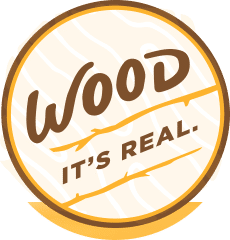Ground Contact vs. Above Ground?
Are you a weekend warrior who loves to build? There are dozens of fun DIY projects you can take on, and lots of them could be located outdoors. For example, let’s say you’ve decided to construct some planter boxes to make some raised beds in your backyard and an awesome new swing set for the kids. Southern Yellow Pine is an excellent choice for these outdoor projects because it is dense, straight-grained, and easy to work with. You’ll also have no trouble getting your hands on the dimensions you need at your local lumberyard.
Know Your Lumber Before You Build

For outdoor projects, it’s important to understand the difference between Ground Contact treated wood and lumber designed for Above Ground use.
Southern Yellow Pine can be treated in a variety of ways to add to its durability against the elements. In fact, preserved wood comes in several different use categories, and choosing the right boards for your project will ensure that you get to enjoy your handiwork for years to come.
What Does Ground Contact Mean?
Because most decay fungi and termites live in the ground, you’ll need an appropriate level of protection for wood used in those scenarios compared to material that is used above the soil. Southern Yellow Pine with a Ground Contact designation is intended to protect your lumber from rotting in applications that have direct contact with soil (either resting on or installed into the ground) and excess moisture (beyond normal rainfall and watering systems). It’s used in cases where frequent wetting or immersion in fresh water doesn’t allow the lumber to dry. It should also be used in some building scenarios where components, such as deck or dock joists, beams, and ledger boards, would be considered critical to the safety of the structure and difficult to replace. A Heavy-Duty Ground Contact may be required in certain high-decay hazard or exposure applications (structural retaining walls, horticulture sites, etc.).
SYP treated for Above Ground applications is intended to be used in common outdoor project applications that aren’t subject to the aggressive decay organisms that are at ground level. This material is adequately treated to withstand some contact with moisture as long as it is expected to run off and/or dry fairly quickly (as is the case with normal rainfall and watering systems). It usually carries the same general warranty as Ground Contact when used appropriately and, because of the lower level of chemical needed, can be less expensive than its Ground Contact equivalent.
Depending on your project, you may decide to use Ground Contact, Above Ground, or a combination of the two for the appropriate level of protection.
New Ground Contact Standards
Although material treated for Above Ground traditionally uses preservatives and continues to perform well for those applications, there are scenarios when using Ground Contact material may be considered. The American Wood Protection Association (AWPA) 2016 Book of Standards offers new guidelines to help both professional builders and enthusiastic amateurs decide when to choose Ground Contact treated wood. According to their latest recommendations, Ground Contact should be used when:
- Wood will come in contact with soil, vegetation, leaf litter, and debris that can hold moisture for extended periods of time.
- You don’t expect good air circulation, especially on the underside and between decking boards.
- Wood components are installed less than six inches above the ground and are supported by treated wood or concrete without a moisture-transferring barrier/break.
- Wood is in direct contact with material that already shows signs of decay.
- Wood gets wet on a very frequent, recurring basis and doesn’t have time to dry adequately.
- You are building in a tropical climate.
The AWPA also recommends that Ground Contact be used when deck or dock joists and beams are in a location that makes them difficult to repair or replace. It’s ultimately up to you to decide what products to use, but these guidelines can form a handy mental checklist as you come up with the cut list for your next project.
When to Consider Ground Contact Lumber
Feeling a little confused? To make things easier to visualize, take a look at the graphic below. It addresses nearly all the typical outdoor projects you might choose to take on, and it shows where Ground Contact lumber is a good idea.

The new 2018 International Residential Code & International Building Code from the International Code Council now recognize the 2016 AWPA Book of Standards as the code guidelines for treated wood uses.
To clarify what the lumber at your local building supply store or lumberyard is intended to be used for, simply look at the labels on the end of each piece. Lumber treated to the AWPA standards will say Ground Contact and have the code UC4A displayed, and it will have the Quality CheckMark™ symbol as well.
Whether your project calls for Above Ground or Ground Contact, you’ll have peace of mind knowing that your work is built to last. Priceless.
(Images via PreservedWood.org, via Wood. It’s Real.)





